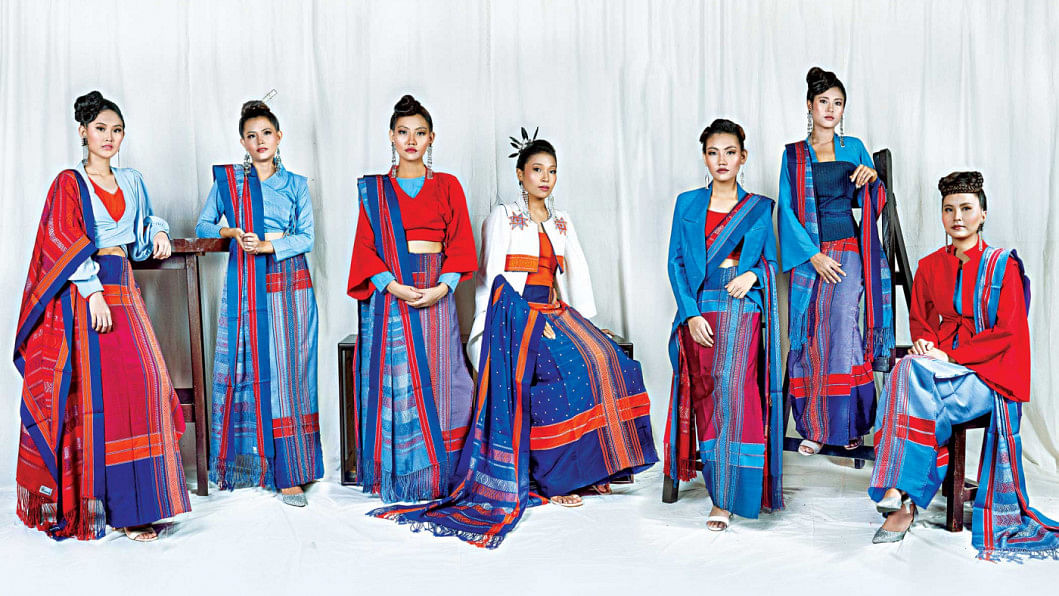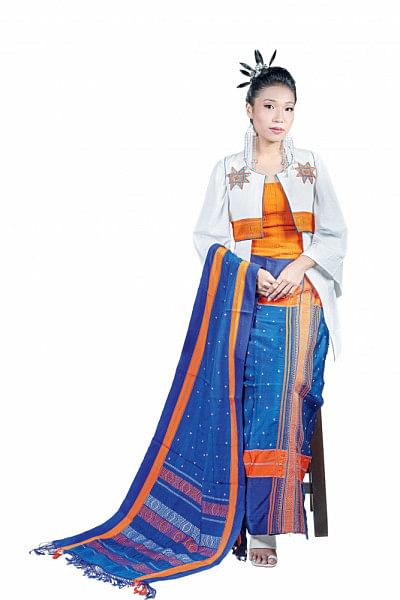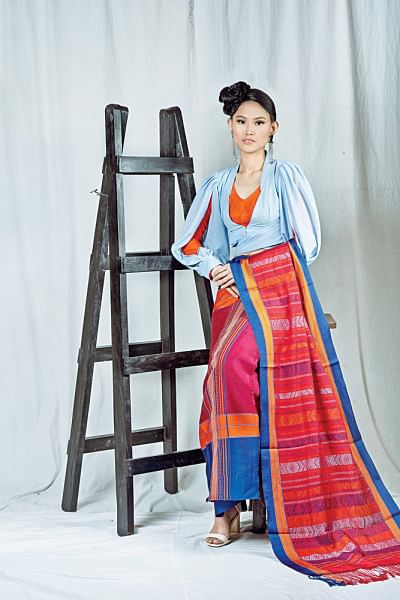Tenzing Chakma’s Sozpodor


Curated under his own label, Sozpodor, Tenzing's line strives to remind us what power Bengal's indigenous clothing is poised to carry and what statements of sartorial grace they can convey.
"Fashion is deeply introspective. It is a personal expression of self, meaning, you can either take it or leave it. If you choose to embrace it, it is liberating and dictates every part of your life. With my own self, I've always chosen fashion and every time I've chosen it, it's been to tell the story of my community. This means championing originality and staying true to my roots," shares Tenzing.
Never one to compromise his vision, Tenzing bids to do just this with his autumn portfolio. What the Bangladeshi designer deserves credit for is his unique ability of taking native attires of Chakma tribes from the hill tracts of Bengal and transforming them into luxury prêt-à-porter fashion. But how exactly does he do this?
The Pinon and Hadi adorning the beauty of a Chakma woman in the majestic hills of Rangamati is the vision that Tenzing deconstructs in his autumn clothes. Allocating ample space in his garments for bursts of vibrancy tethering to cerulean blues, tangerine oranges and vermillion reds, Tenzing's rendition of the indigenous garb reveals tales of grace. Extraordinary inventions like blouses in twos¾'cause, let's face it, two is better than one ¾ add layer and structure in the most contemporary way imaginable to the traditional clothes. Every drape has the perfect amount of pleats and every garment oozes infinite swish.
Look closely at the flow of the fabric and you will notice the language of unique motifs placed so strategically that they exude minimalism. These keynotes are of tribal origins fused with Indo-Asian patterns, an iconic trademark of Tenzing's designs, and one which cements his place as the cool Bangladeshi designer well ahead of the fashion curve!
Style with avant-garde headgears and hairdos inspired from exotic Mongolian cultures and Tenzing's display is complete, his penchant for reviving tribal cultures strengthened more so than ever.
Undoubtedly, Tenzing is a fearless designer, a trait not only reflected in his clothes but also in his campaigns for diversity and inclusivity in the Bangladeshi fashion industry.

"Promoting different cultures and indigenous roots is very important to me and this has always been my eternal goal as a designer. This is why I try to make my fashion campaigns as diverse as possible. It's crucial for the advancement of fashion to include models of different skin and ethnicities, to advocate for tribal identities and to make collections as inclusive as possible. These are some of the principles I try to follow in my own endeavors," explains Tenzing.
With an ethos so clear and transparent, Sozpodor's autumn line only cements its reputation as an unapologetic fashion house of Bangladesh. Such brazen advocacy reassures us that Bengal's indigenous identity will never be lost. Not as long as Tenzing Chakma, standing at the helm of this movement, can help it.
Models: Trijita Khisa, Dhipannita Chakma, Anushka Chakma, Arpa Chakma, Eretrina Chakma, Sristy Chakma
Photo: Hill Valley Production
Wardrobe: Sozpodor by Tenzing
Makeup: Deedhiti Chakma

 For all latest news, follow The Daily Star's Google News channel.
For all latest news, follow The Daily Star's Google News channel. 



Comments